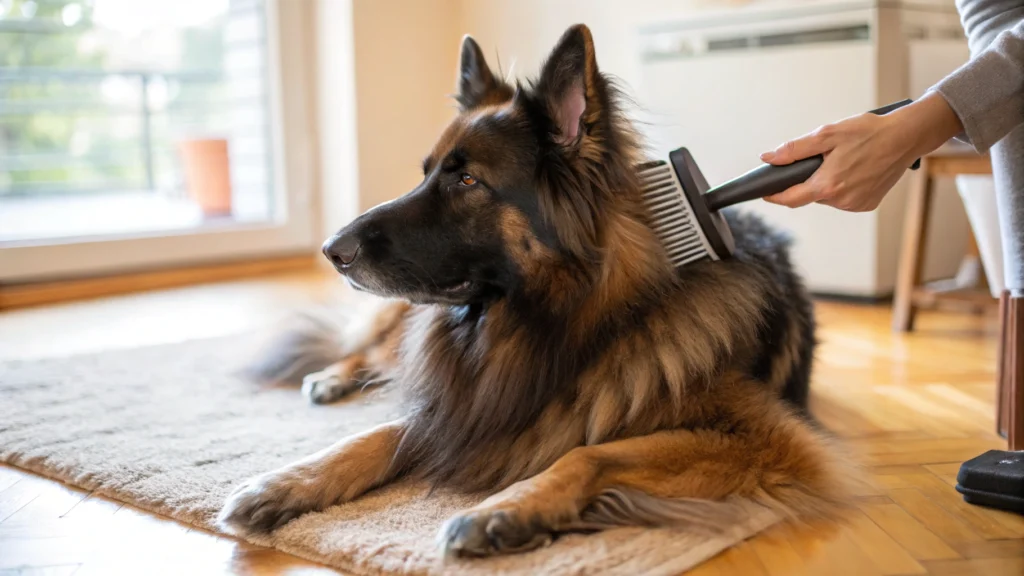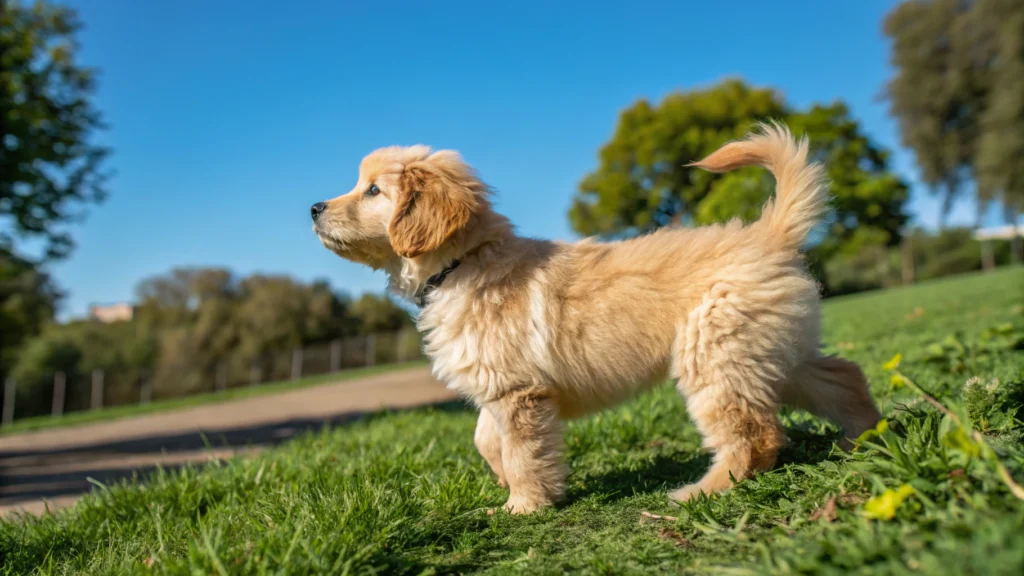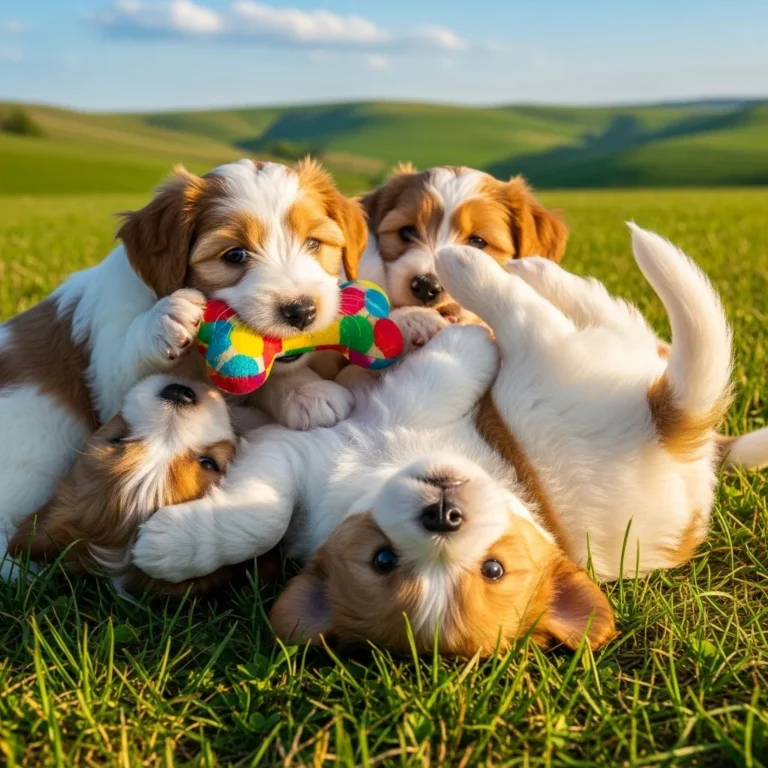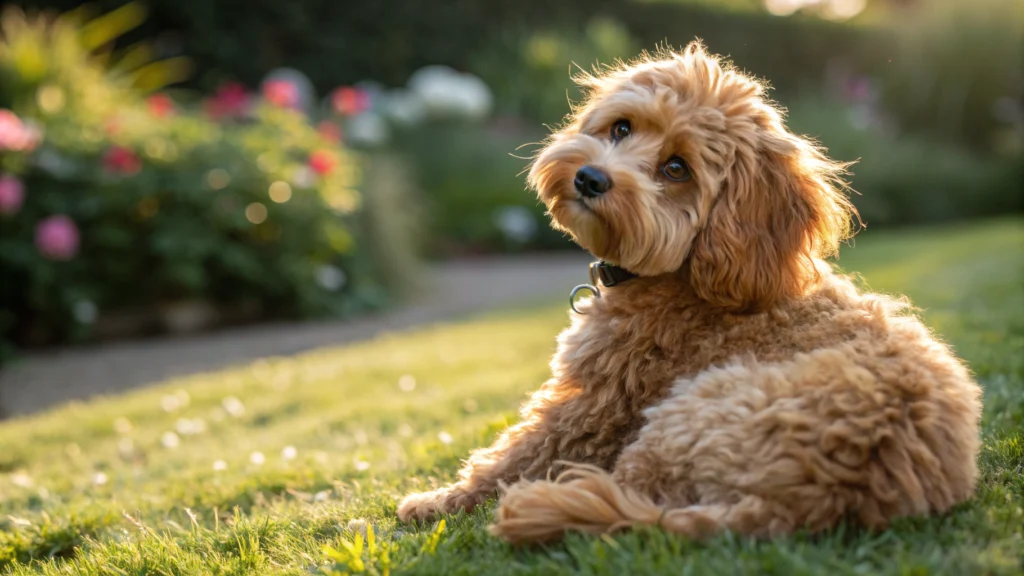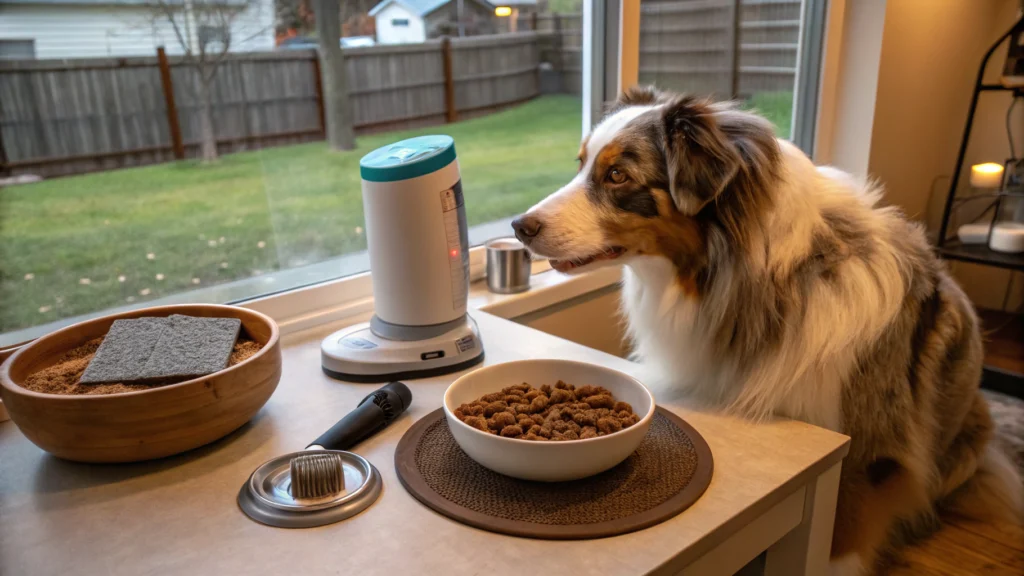
Toys and Australian Shepherd
A mini powerhouse with lots of energy.
The Toy Australian Shepherd appears on the dog scene like a fur tornado, a little ball of energy that manages to capture the essence of its bigger relatives and pack it into a small body. While not recognized by the American Kennel Club, this breed has gained a following among dog fans for its high energy and versatility. Ironically, the name suggests this dog comes from Australia, but the Toy Australian Shepherd originated in the American West.
Like the Australian Shepherd, the Toy Australian Shepherd was developed to have all the herding abilities of a standard Australian Shepherd, just in smaller package. This breed is very appealing to those who want a lively high energy dog but do not have the space limitations to accommodate a larger breed.
History and Development of the Breed
The Toy Australian Shepherd was bred in the United States starting in the late 1960s and 1970s. The Toy Australian Shepherd was developed by selectively breeding smaller Australian Shepherds and mixing in toy breeds such as Pomeranians or Chihuahuas from time to time. The goal was to keep the intelligence, agility, and herding instincts while reducing the size. The end result is a dog which is very similar to its ancestors in all ways except for size, with a similar working dog drive.
Why Dog Lovers Love Toy Australian Shepherds
Why the Toy Australian Shepherd is so lovable? This dog’s combination of looks, intelligence, and loyalty will definitely make it hard to say no. This dog demands connection to its people and will bond heavily with you. These dogs can do well in a variety of settings such as an apartment in the city or a house in the suburbs. For someone who wants a lively dog that will keep up with you on a hike, retrieve with you when you play catch, or compete in agility games, this is a great breed that encompasses all things puppies and dogs, making them an easy choice for many dog owners.
Physical Characteristics
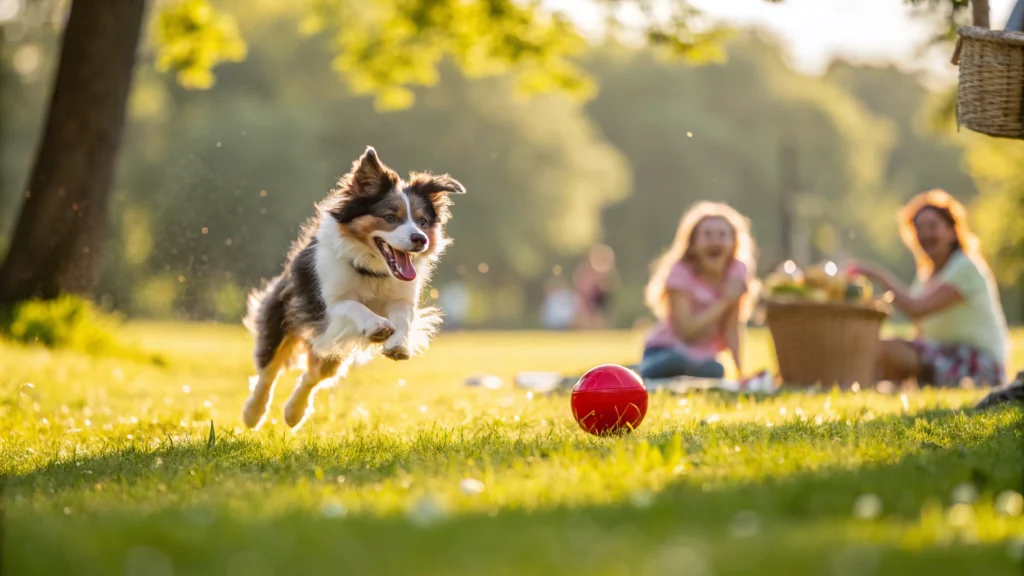
Small Size, Big Personality
The Toy Australian Shepherd ranges in size from 10 to 14 inches with a weight between 10 and 17 pounds. From head to tail, they are muscularly built, structurally sound, and very athletic. Their size is small but they are very agile and functional. They have large, often almond shaped eyes, which can sometimes be blue, brown, green, or amber, with a lively expression.
Toy Australian Shepherds also have floppy ears that are triangular, which adds an element of playfulness to their overall appearance. This breed’s looks not only reflect their appearance but also their history, with a blended design and use for professional and personal, and good looking as well!
Coat Coloring and Coats
The Toy Australian Shepherd is known for its amazing double coat, with an outer layer that is water resistant and a dense, soft undercoat. There are many colors, including blue merle, red merle, black, and red, and also some white or tan markings. The coat can be straight and smooth or a little more wavy. It also requires attention to keep it healthy and shiny. Each coat pattern is different, meaning that every Toy Australian Shepherd is a beautiful work of art, as unique as a fingerprint.
Size Comparison with the Standard and Miniature Version
Unlike the standard Australian Shepherd (up to 23 inches and 65 pounds) and the Miniature American Shepherd (14 to 18 inches, 20 to 40 pounds), the Toy Australian Shepherd is the smallest version. The smaller size makes it a good dog for living in a smaller space, but still has the same action and energy! Going with a smaller size option gives potential owners a choice based on their lifestyle and the Toy Australian Shepherd is the most portable.
Temperament and Personality
Intelligence and Desire to Please
There is no denying the Toy Australian Shepherd’s intelligence – it is one of the most intelligent dog breeds! The Toy Australian Shepherd is always looking for mental stimulation, loves to learn new commands, and has a strong desire to please. Training is an enjoyable process for owners, as these dogs want to showcase a wide assortment of tricks to keep owners happy.
Because of their intelligence, boredom will eventually lead to trouble. A Toy Australian Shepherd will provide wonderous times for their human companions and a willing partner for adventures both physically and mentally challenging.
Playful yet Protective
Playfulness is definitely a main characteristic for this breed’s personality. The Toy Australian Shepherd just adores playing games, such as fetch or tug-of-war that can pay out in hours of fun. But behind the playful demeanor lies some seriousness when it comes to protecting their family unit.
To the Toy Australian Shepherd, their family represents their flock, and the dog’s job is to protect them at all cost. While it is not necessarily aggressive, a Toy Australian Shepherd may bark to let the owners know that a stranger is approaching. Despite this immense affection, this breed brings a great deal of affection with a sense of responsibility that many families appreciate.
The ‘Herding’ Instincts in a Small Dog
To no surprise, with the Toy Australian Shepherd being a herding breed, they still have some strong instinctual behavior to try to control movement, whether it’s livestock or, humorously, children. They may use gentle nipping, or a circling gait to accomplish following the movement rule. Enforcing the movement to sound command through training of the Toy Australian Shepherd is first and foremost advised.
Care Considerations
Dietary Requirements for A Lot of Energy
Feeding a Toy Australian Shepherd takes a very specific diet plan, considering the toy breed’s energy and activity levels. The dog should be provided high-quality kibble with a minimum of 25% protein to maintain the breeds lean muscle mass, the fat percentage should be moderate to fuel agility and exercise program the dog is involved in.
Fiber-rich fruits such as blueberries or strawberries should also be provided for digestive health and antioxidants. The daily feeding recommendation for puppies is 2/3 cup to 3 cups, broken into three to four meals a day. Depending on the dog’s activity level as well as its environment, consult your veterinarian to determine portion sizes.
Brushing and Maintaining the Double Coat
The Toy Australian Shepherd is a double coat breed that requires effort. This breed generally gets clipped and shaved often, but still requires a lot of brush time to prevent matting and shedding, which is a year-round battle that peaks twice a year. With a slicker brush and undercoat rake, brushing should occur on a weekly basis. Owners may want to bathe Toy Australian Shepherd every six to eight weeks, but excessiveness can rob the coat of its natural oils. A regular nail trimming schedule and ear cleanings also contribute to grooming care, keeping this breed looking amazing!
Exercise Requirements for an Energetic Breed
Exercise for the Toy Australian Shepherd is critical for at least 90 minutes a day to calm its energy. This is not meant to include walks, but running, hiking or playing games instead. In addition, working this breed’s mind is equally as important, so providing mental stimulation such as puzzle toys, continued training exercises and agility courses is helpful!
Training and Socializing
Using Intelligence to Train
The training process for a Toy Australian Shepherd is enjoyable due to the intelligence and desire to work for food. In general, using positive reinforcement, like treating and giving praise, is typically the way to go. But consistency is important with this breed, because they can be stubborn with how far they will push you. They can get bored easily, so having short and interesting programs will help the dog stay engaged and keep responding to commands.
Socialization to Reduce Herding Behavior
Socialization is important for the Toy Australian Shepherd breed in reducing the herding instinct, especially around children or other pets. Socializing your dog can include exposing them to many different environments, people, and animals to build confidence and limit their desire to nip, bark, etc. Puppy socialization classes at pet stores can be an excellent way to do this in a controlled environment that will provide socialization and skills so that your dog will become an excellent companion.
Online Training Resource for Toy Australian Shepherds
For owners who do not want to do training in the traditional method, there are many online courses for the Toy Australian Shepherd breed. Lots of websites have tons of information available, such as links to video lessons, Zoom courses, and community forums that support teaching and training for their dog, whether it is basic obedience to special tricks. The beauty of this is you can train on your own time and engage with a breed that will benefit from constant and fun instruction.
Considerations Regarding Health
Common Health Problems and Prevention
Generally considered healthy, Toy Australian Shepherds do, however, have a history of certain problems, both genetic and not genetic, such as hip dysplasia, eye problems, and emotional – physical – behavioral issues like multidrug sensitivity (more common with merle dogs). Even with these potential health problems, responsible health practices, which include regular vet checkups, good food, and controlling their weight, can diminish the risk of actual health problems, even when too much weight alters body and psyche.
While you can get some screen tests done through vets, and also be sure to prevent any runts from breeding, utilizing Genetic Testing with a company like GenSol Diagnostics, may assist you in detecting and proactively taking care of issues.
Why Responsible Breeding is Important
As with many dogs, including Toy Australians, irresponsible breeding can easily result in health problems due to conditions like inbreeding and runts being used for breeding purposes. Reputable breeders will conscientiously put health first. Then, documentation of each parent being screened (hips, eyes, etc.) is provided, as well as confirmation of absence of harmful history, as these are vital to the health of the puppies. The American Stock Dog Registry offers registration and other requirements for Toy and Miniature Australian Shepherds that comply, and adhere to, an ethical standard that protects the vitality of the breeds.
Spaying and Neutering Recommendations
Between 4 and 9 months generally is an appropriate timeline for spaying or neutering Toy Australian Shepherds, however, many males may be neutered to limit inappropriate behaviors like marking, after sexually matured. Spaying and neutering significantly reduces risks of cancers and improves behaviors, which are advantageous to the quality of life for your dog and everyone else. Checking with a vet is important to ensure that the timing is appropriate.
Living with a Toy Australian Shepherd
Suitable Living Environments
The Toy Australian Shepherd can adapt to any living situation as long as its exercise requirements are met. If you have a fenced in yard within which the dog can safely play, then that is ideal. However, if you live in a more urban area, regular trips to the park and engaging play (such as interactive toys) can serve the same purpose. The Toy Australian Shepherd enjoys being part of an active household with people around and is probably not an ideal pet for a person with a sedentary lifestyle.
Compatibility with Kids and Other Pets
The Toy Australian Shepherd is a great family dog, affectionate and playful with children, where the children have been properly taught in the responsible care of a pet. The Australian Shepherd’s herding instinct may express itself as the dog nipping at kids’ heels, which can usually be curtailed by taking the dog through proper socialization. Toy Australian Shepherds typically get along well with other dogs and other pets, however, if they are introduced to cats inappropriately it may trigger their prey instincts.
Dealing with Separation Anxiety
One of the hardest things for a Toy Australian Shepherd to deal with is separation anxiety; the constant bond with their owner may cause behavioral issues if they are left alone for too long. You can help minimize the anxiety of being alone by using a crate for short times in conjunction with interactive toys to occupy its mind as well as desensitization to being left alone with increasingly longer absences.
Putting the dog to work with a puzzle toy or another “job” will allow it to wear off energy which will ultimately lead to a better and less stressed out companion.
Getting a Toy Australian Shepherd
Finding a Responsible Breeder
Finding a responsible breeder is vital as the Toy Australian Shepherd is not recognized by the AKC, which usually attracts unethical sellers. Choose a breeder that is covered by the American Stock Dog Registry or another type of comparable registry, that has health testing and is transparent in all areas of the process. It is good to see the puppy in person to check the health and the condition of the puppy’s environment.
Cost of Toy Australian Shepherd
A Toy Australian Shepherd puppy price is generally $1,800 to $2,500 and can vary based upon the breeder’s reputation, parents, and color. Higher show-quality and show-quality bloodlines are more expensive. You should budget for ongoing costs, including food, grooming, and vet care, as you will want to provide quality things for an active breed.
Adopting a Toy Australian Shepherd
It is less common, but some Toy Australian Shepherds end up in shelters or through rescue organizations such as Australian Shepherd Rescue. This can be a good option as you will generally spend less on adoption and they often come already vetted. Check your local shelters and breed-specific rescues to find a loyal companion that needs a forever home.
you may like it
